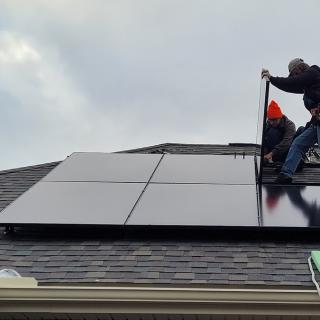Advertisement
Call me crazy, but I’ll never forget how thrilled I was the day I discovered I could crack my own back.
It wasn’t a matter of money. One of my best friends was a chiropractor with a posh if minimalist office just a block or so around the corner from my office at the time, 30 Fifth Avenue. I would swing by during his mid-morning or late afternoon lull and he’d take care of me in a New York minute: cervical, mid-thoracic, sacroiliac joint.
He wasn’t one of those chiros who loaded you up with Standard Process supplements on your way out the door. No, he stuck to his knitting – subluxations of the axial skeleton – and I appreciated that. But was this what I had to look forward to: maintenance care for life? De-kink my neck and back, un-torque the SI joint-- month after month, year upon year? Turns out it wasn’t.
My self-care discovery happened completely by accident. We were on the floor stretching after, what was it, an “Abs of Steel” or “Botsu Booty” class at my gym. All this lying on the floor and exhalation stuff was kind of new to me, but once I gave into it cool things started happening.
The de-kinking adjustments he’d done on me were happening all by themselves – with just a bit of informed guidance and relaxation on my part. I was fixing my own body. But why hadn’t he ever told me I could learn to do this?
This, I’ve come to appreciate over the years, is one of the principal problems with our approach to pain: as kids, as young adults, as seniors, most of us never really learn how our bodies work.
And shamefully, neither do most of our caregivers.
The sharp pain in the arch of my foot actually comes from tension in a muscle (fibularis) of my leg. The intolerable, aching big toe in my coworker stems from an over-stressed muscle (plantaris) behind her knee, much as her sister’s plantar fasciitis is fixed once she releases a little-known muscle deep in her calf (soleus).
A patient’s sciatica magically goes away after making a few trips around the block at night with her husband or learning to care for the piriformis and glut minimus muscles in her butt. Leg length discrepancy (and even bulging discs of the lumbar spine) not so mysteriously vanishes once the notorious “hip hiker” quadratus lumborum is tamed. And we haven’t even gotten to the neck, arms and shoulders.
Once we discover that our joints and limbs are but a discernible system of pistons, cords and pulleys, we can pinpoint and iron out the source of just about any musculoskeletal pain. We have the power to feel well.
Unfortunately for some, we also have to consider the Frankenfood world in which we now live. Oh, what we’ve done to our dairy cattle, our poultry, our hogs, water and wheat. When friends from Europe or Canada visit, they always seem to marvel at the colors and content of the packaged foods and drinks (not to mention the packaging itself) companies are allowed to sell here.
Add to that what we’ve done to what used to be the staples of daily life – bread, milk, eggs – and it’s little wonder the parallel plagues of cognitive and autoimmune disorders have overtaken us. There is compelling albeit anecdotal data that many of our migraines and fibromyalgias and rheumatoid arthritises can be not only ameliorated but banished by simple if sometimes disorienting changes in the way we eat.
Woven throughout all this, too, are the everyday stresses (and our responses to them) of modern life: traffic, noise, financial pressures, coworkers, deadlines, disappointment. Studies have shown that even a stressor as simple as forcibly coaching someone to count backwards both unearths and amplifies previously low-grade or even unnoticeable pain. It’s unlikely many people need to be told this, but toxic situations and relationships – and our adeptness at managing them – can often make the difference between an otherwise quiescent pathology and a roaring lion.
It’s hardly surprising given our culture and heritage that we employ militaristic imagery in our approaches to pain management. (We’re also suckers for quick fixes.) We pop pain killers. We deaden nerves. We excise, laminectomize and fuse. But with something as interconnected and interdependent as the human body (we haven’t even broached the topic of fascia, but please feel free to explore on your own – or I’ll try to cover it in a future column), is it any wonder these reactionary responses rarely work?
If we could just take the time (or if our caregivers and educators would) to actually understand our bodies better, I dare say we’d be freeing ourselves of a lot of pain.



